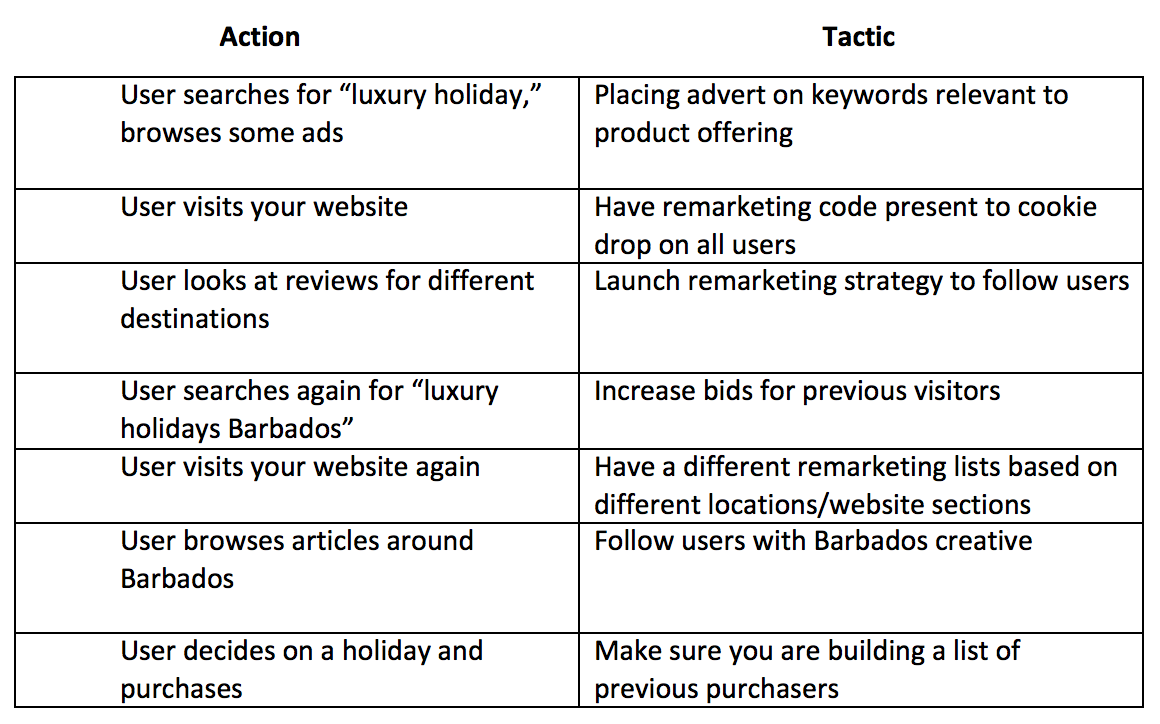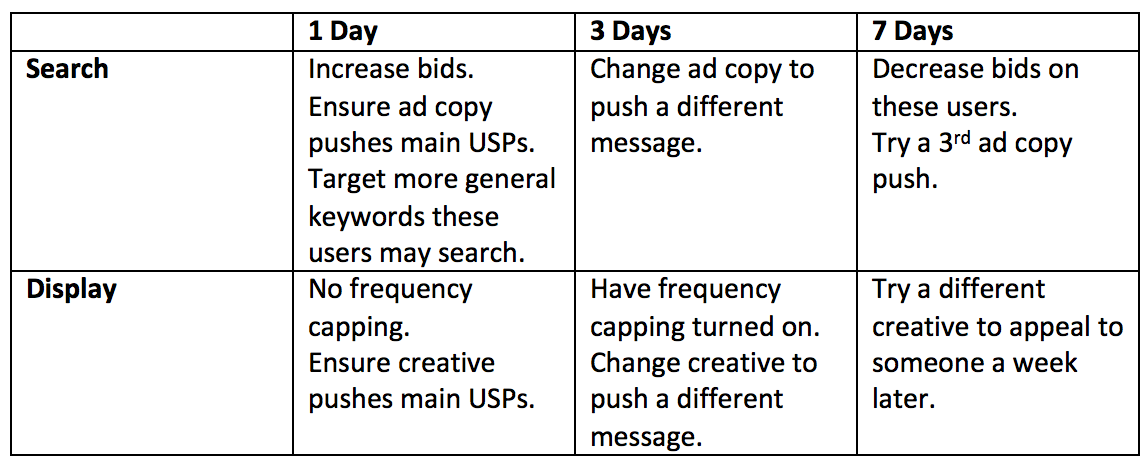Historically digital marketing has been focused on new customer acquisition. When considering paid search we generally try to find new users who have the intent to buy our products or services. However, this sentiment is changing. New innovations in paid search are allowing us to use the channel for repeat customer acquisition. Email as a channel was the first branch into direct mail online as it was easily transferable as the services are so similar. Over the last couple of years, this rationale has expanded further to the point where thinking like a direct marketer is crucial to having the best paid search strategy.

There are 2 ways we can think like a direct marketer on top of our paid search background.
Remarketing On The Google Display Network – Remarketing allows us to follow users who have already been to our site through the Google Display Network. We can do this with our own creative or alternatively with dynamic creative based on a Google Merchant Center feed.
Remarketing Lists For Search Ads (RLSA) – Remarketing lists for search ads (RLSA) allow us to change our bid strategy, ad copy or keyword strategy for users who have previously visited our site and are searching for a keyword on Google or Google’s Search Partners.
Like direct advertising, remarketing allows us to target groups of users with highly targeted, relevant content.
The key to having a great repeat customer strategy is to make sure you are utilizing both remarketing on Search and the Display Network and that your strategies are fully aligned. This notion means that you are maximizing exposure to potential customers at different stages of their journey online. Let’s look at an example for those who abandon their shopping baskets.

You may have noticed that a lot of users tend to abandon their basket. This could be for a number of reasons, however, as they have put something in their basket it signals a certain level of intent that you want to maximize. So how do you do this?
Search
- Increase your bids when these users search again on keywords in your account.
- Change your ad copy to incentivise them to come back. This could be a promotional code such as free delivery or it could be an ad copy that pushes the benefits of purchasing that product from you (eg: 3 step checkout, 1-year guarantee, fast shipping, etc).
Display
- Set up a campaign to target users who have abandoned their baskets. Use bids similar to your search campaign to begin.
- Set up creatives to reflect your search messaging or set up dynamic remarketing to remind visitors of the products or services they had been searching on your site.
To gain the most benefit you want to make sure that your messaging is aligned. For example, you might sell luxury holiday destinations. This purchase isn’t one that someone is likely to make instantly. There are likely to be many stages in that purchase cycle:
- User searches for “luxury holiday,” browses some ads
- User visits your website
- User looks at reviews for different destinations
- User searches again for “luxury holidays Barbados”
- User visits your website again
- User browses articles around Barbados
- User decides on a holiday and purchases
This process could be over a series of days or weeks and could involve even more stages.
Let’s have a look at how paid search marketing could assist this user:

Your strategies can get more complex and sophisticated, but remember that you do need a significant amount of data to start looking at more granular strategies. You need 100 users in your cookie pool for Display Remarketing but you need 1,000 users for RLSA targeting. These thresholds might limit your options depending upon your website traffic.
One way you can advance this is by considering different time periods. For example, you may be selling a product that is likely to be an impulse buy / have a short purchase window and you have a high volume of traffic.

Also, take into consideration how you can overlay audiences in your campaigns. For example, you might want to take your remarketing list to the next step and not only increase your bids if someone has been to your website before, but if they are in your ideal demographic group. Alternatively, if someone is on relevant content pages on the Display Network you may want to be more likely to appear.
The more targeted and relevant you can make your strategy to the user the better. Of course, this strategy doesn’t need to stop at paid search. This strategy could link into your other digital marketing channels as well.



